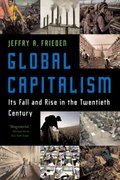Question
Question 1 The oil market is a large and active commodity market, but interesting production of oil is fairly concentrated in a few oil producing
Question 1
The oil market is a large and active commodity market, but interesting production of oil is fairly
concentrated in a few oil producing countries. Different regions have different costs of
producing and supplying oil. For example, some countries in the Middle East have large oil
reserves which are easily extracted via standard drilling. On the other hand, countries such as
the US and Canada extract oil from oil sands, a process that complex and much more difficult.
The table below shows the capacity and production costs by region.
Oil is used in many critical functions globally (gasoline for transportation, heating oil, jet fuel,
etc.). Because it is so important to the global economy, we can assume that demand is very
inelastic (think back to class 1) - that means that at any price of oil, in the short term, demand
for oil is always the same.
Region Production costs
($/barrel)
Capacity (millions of
barrels per day)
Brazil $81.10 3
Canadian oil sands $94.40 7
China $66.50 4
Kazakhstan $63.80 5
Mexico $90.40 3
Norway $67.80 2
Russia $50.50 10
Saudi Arabia $33.39 16
US (excluding shale) $55.90 8
US shale $86.50 7
Other OPEC members $49.90 30
Other non OPEC members $74.50 11
A. Construct a supply curve. For help, look at the Excel file for the example in class of
constructing a supply curve for blood orange production.
B. Pre COVID 19, demand for oil was constant in the short term at 90 million barrels a day.
What would you predict the market equilibrium price for oil was based off of this demand
and the supply curve you constructed?
C. During COVID, travel decreased, factories closed, etc. and as a result oil demand fell to 80
million barrels a day. What is the new equilibrium price of oil?
Copyright Parijat Samant 2/25/2021
Cannot be posted, distributed, and / or shared without owner's permission
D. By 2022, a number of new producers of oil will have come online by then - see the table
below of new producers. Construct a new supply curve based for 2023 (the current
suppliers will still continue to produce at the price and rate as shown in the prior table).
New producing regions Production costs
($/barrel)
Capacity (millions of
barrels per day)
Colombia $60.00 0.4
Other Non-OPEC (Africa) $70.00 0.3
Iraq $60.00 1.3
OPEC Natural Gas Liquids $60.00 1.6
Other OPEC $80.00 1
Natural Gas Liquids $80.00 0.7
US Shale Oil $70.00 1.5
Kazakhstan Onshore $70.00 0.2
UAE $70.00 0.5
Brazil Deepwater $80.00 1.1
Canada Tar Sands $90.00 1.2
US Offshore $80.00 0.3
Kazakhstan Offshore $80.00 0.2
Angola $80.00 0.8
E. Post COVID, oil demand is expected to rise again and economists predict the new demand
for oil in 2022 will be 96 million barrels per day. Based off of your new supply curve and
this demand, what will be the equilibrium price of oil in 2022?
Step by Step Solution
There are 3 Steps involved in it
Step: 1

Get Instant Access to Expert-Tailored Solutions
See step-by-step solutions with expert insights and AI powered tools for academic success
Step: 2

Step: 3

Ace Your Homework with AI
Get the answers you need in no time with our AI-driven, step-by-step assistance
Get Started


